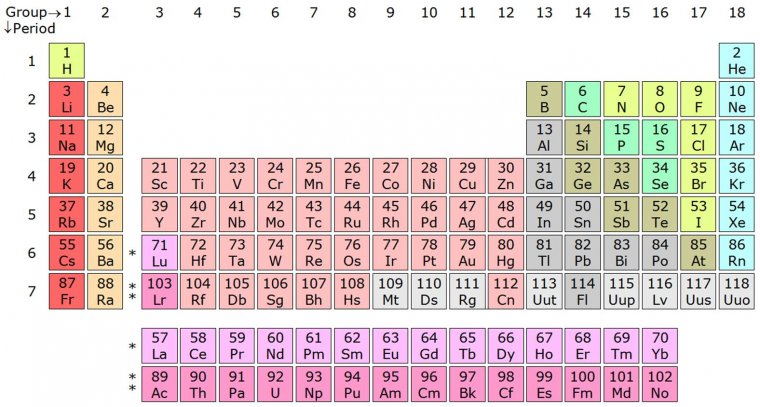| News / Science News |
IUPAC proposes four new chemical element names
Wikinews | JUNE 11, 2016
The International Union of Pure and Applied Chemistry (IUPAC) announced the proposed names of four chemical elements recently discovered by scientists around the world.

IUPAC proposes four new chemical element names. ![]()
According to the rules of IUPAC, the four names — nihonium, moscovium, tennessine, and oganesson — are to be subject to a five-month period of public scrutiny which ends November 2016. IUPAC allows the teams of scientists who discover and synthesize new elements to name them, subject to process.
Element number 113, nihonium, is named after the Japanese name for the country of Japan — Nihon — where it was first synthesized and discovered by researchers at the RIKEN institute.
Elements 115 and 117, moscovium and tennessine, were co-discovered by researchers in the United States and Russia. Moscovium's name comes from the Moscow-based Joint Institute of Nuclear Research where researchers discovered the element. Similarly, tennessine is named after the US state of Tennessee where chemical research is commonly conducted.
Lastly, element number 118, oganesson, is named for a Russian physicist, Yuri Oganessian, team leader from the synthesis of tennessine, element 117.
Elements 113, 115, 117, and 118 complete the bottom row of the current periodic table. Further discoveries would likely add a new row on the table. Currently, these elements are given the systematic placeholder names ununtrium, ununpentium, ununseptium and ununoctium, respectively.
The elements are formed as a result of colliding two smaller atoms together to form a larger atom. These resultant atoms are made in small amounts, are generally unstable, and decompose into smaller components in periods of time less than a second.
IUPAC confirmed discovery of these four elements in December. These were the first confirmed discoveries since IUPAC confirmed elements 114 and 116, flerovium and livermorium, in 2011.
YOU MAY ALSO LIKE




